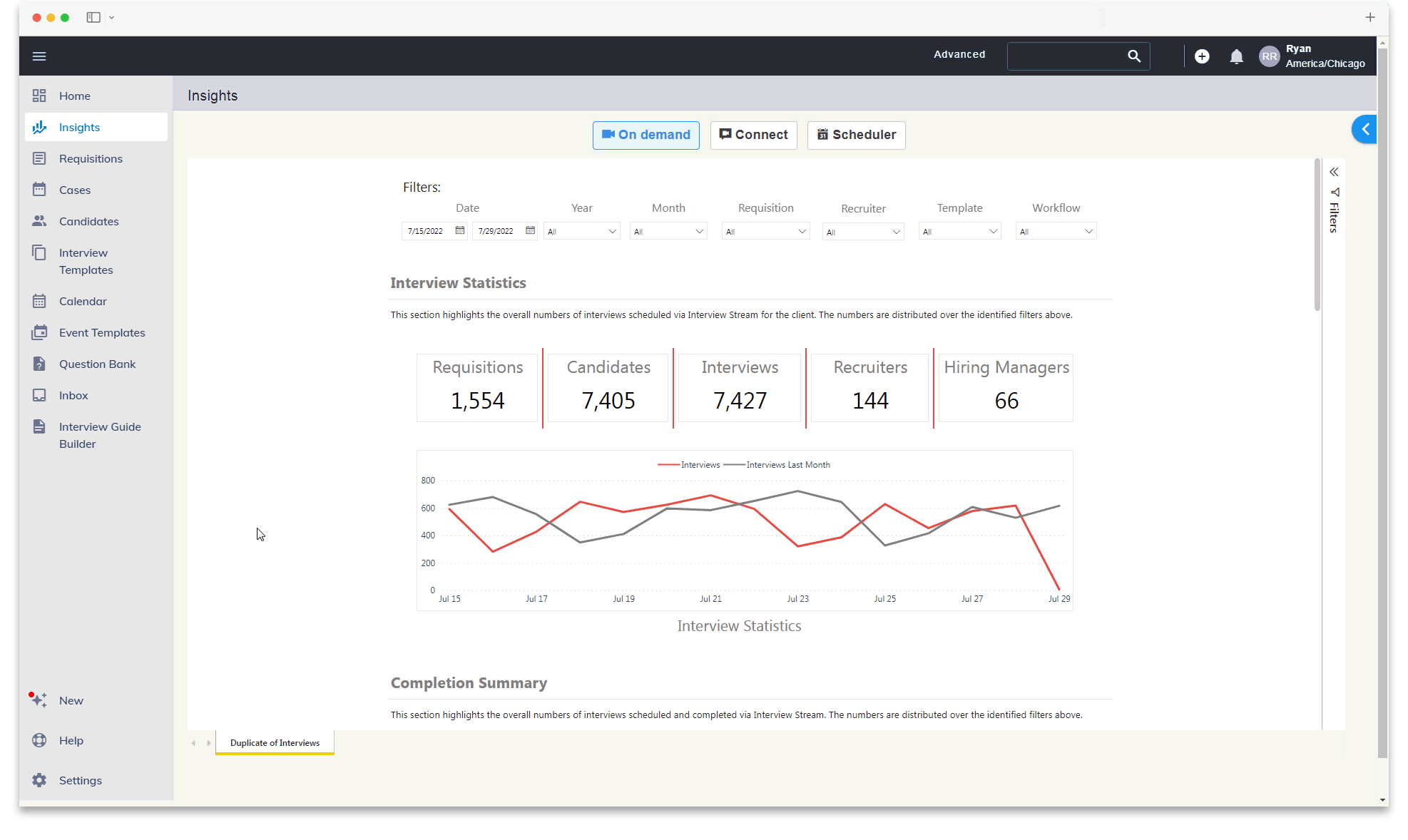Track These 7 Recruiting Metrics to Supercharge Your Hiring Outcomes
“Talent acquisition teams with mature analytics are 2x more likely to improve their recruiting efforts; and 3x more likely to realize cost reductions and efficiency gains.” – LinkedIn, Data Driven Recruiting
Within talent acquisition, data isn’t just important—it’s essential. Data-driven recruiting is the key to finding the right talent faster and smarter. Think of recruiting metrics as your roadmap, guiding you toward the perfect hires. According to Forbes and Net Talent, “future recruiting will prioritize strategic metrics that align with business outcomes, marking a departure from decisions based solely on tactical metrics, like time to fill or offer acceptance rate, and recruiters’ immediate action.”
In this blog, we’ll highlight seven essential hiring metrics that can transform your hiring process from good to great.
1. Time to Fill
Definition: Average Time to fill measures the number of days it takes to fill a job opening, from posting the job to the offer being accepted.
Why It Matter: Time to Fill is the stopwatch of your recruitment process. A shorter time frame indicates a smooth, efficient process, allowing you to secure top talent before your competitors. If this number starts creeping up, it may signal a need to streamline your steps, such as faster screenings or quicker decision-making. Tracking this as a key recruitment KPI helps improve recruiting efficiency.
2. Time to Hire
Definition: Time to Hire tracks the days from when a candidate first enters your pipeline to when they accept your offer.
Why It Matter: This metric is crucial for candidate experience. A quicker Time to Hire keeps candidates engaged and interested in your company. It also reflects how effectively your team is working together to move top candidates through the process. If candidates are losing interest or ghosting, this metric will highlight where improvements are needed, helping you keep a full recruitment funnel.
3. Cost per Hire
Definition: Cost per Hire calculates the total cost spent on recruiting divided by the number of hires made.
Why It Matter: Monitoring Cost per Hire ensures you’re staying within budget while attracting high-quality candidates. It helps you identify areas where you can save money, such as refining job ads or reducing reliance on expensive job boards, without compromising on candidate quality. This metric is crucial for measuring your recruiting ROI and recruiter performance.
Pro-tip: If you’re looking to improve your recruiting ROI, check out a demo of how interviewstream can streamline your hiring process, cut costs, and enhance efficiency.
4. Application Completion Rate
Definition: This metric shows the percentage of candidates who complete your application process after starting it.
Why It Matter: If candidates drop out before submitting their applications, it can be a red flag that your process might be too lengthy or complicated. By tracking the Application Completion Rate, you can simplify the application process, making it easier for candidates to apply and thereby increasing your talent pipeline. This is a sourcing metric that directly impacts the quantity and quality of applicants.
5. First-Year Attrition Rate
Definition: First-Year Attrition Rate measures the percentage of new hires who leave your company within their first year.
Why It Matter: This metric acts as an early warning system. A high First-Year Attrition Rate could indicate issues with your hiring process, onboarding, or company culture. By addressing these issues, you can improve retention and ensure that new hires are more likely to stay and contribute to your company’s success. This is one of the key quality of hire metrics.
6. Recruitment Funnel Metrics
Definition: These metrics track how candidates move through each stage of your recruitment funnel—from application to offer acceptance.
Why It Matter: Recruitment funnel metrics reveal where candidates are getting stuck or dropping off. By analyzing these stages, you can identify areas for improvement, whether it’s refining your interview process, improving job offers, or addressing other bottlenecks. The goal is to optimize each step to keep candidates progressing smoothly through the funnel, enhancing your overall recruiting conversion rate.
If you’re looking to track your recruitment funnel metrics, check out interviewstream’s insights tool, which gives you a look at your interview drop-off stages, ROI, and tips to improve each step of your interview process.
7. Metrics in interviewstream insights
Definition: These are specialized metrics, such as Recruiting Hours Saved and Funnel Drop-off Rates, available through tools like interviewstream insights.
Why It Matter: These metrics provide a deeper understanding of your recruitment process. Recruiting Hours Saved shows how much time you’ve saved on manual tasks through automation, while Funnel Drop-off Rates help you identify where candidates are losing interest. Together, these insights allow you to fine-tune your process for better results, using the right recruitment metrics tools.

Drive a Better Data-Driven Recruitment Process with interviewstream
Recruiting metrics are more than just numbers—they’re the key to unlocking a smarter, faster, and more effective hiring process. By tracking these metrics, you can make data-driven decisions that lead to better hires, happier candidates, and a more efficient recruitment process.
Ready to elevate your hiring process? Schedule a demo with our team and let interviewstream help you supercharge your recruitment process today!
About The Author
Danielle Steinitz is a marketing professional who pivoted from a sales career to pursue her passion for helping others jumpstart their careers. She excels at building connections and creating opportunities for growth.
